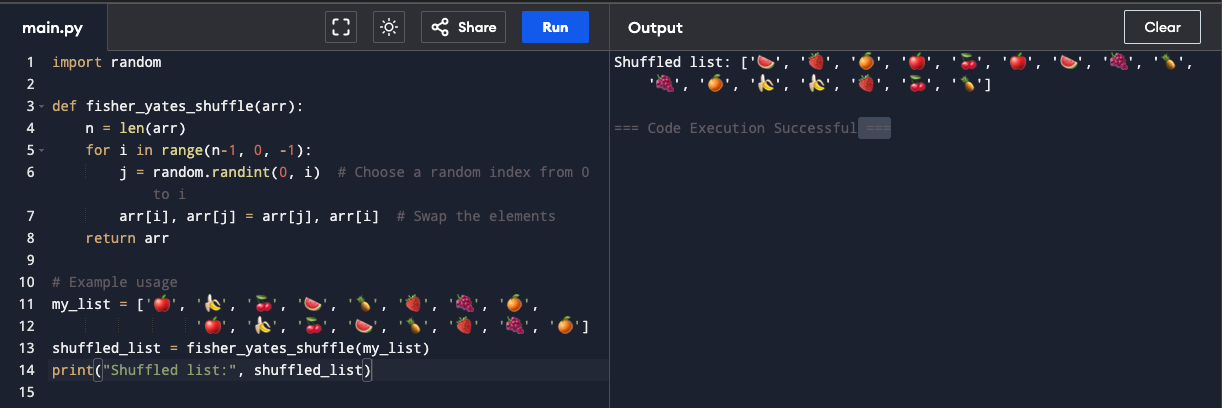Sampling is a fundamental technique used in various fields such as data analysis, optimization, and experimental design. One specific type of sampling that ensures fairness and balance is Balanced Combinations. This method guarantees that selections made from multiple groups or sets are evenly distributed, ensuring that no group is over- or under-represented. In this blog post, we will explore Balanced Combinations, their importance, and how to generate them programmatically using Python.
What Are Balanced Combinations?
The Concept
A Balanced Combination refers to a selection process where items are chosen from multiple groups or sets in such a way that each group is represented fairly. In other words, the number of elements chosen from each group is either equal or proportional, depending on the application.
For example, imagine we have two groups:
- Group A: ( A_1, A_2, A_3 )
- Group B: ( B_1, B_2, B_3 )
A balanced combination from these groups could involve selecting one item from Group A and one item from Group B. Alternatively, in a scenario where each group contains an unequal number of elements, you may want to select a proportional number of items from each group, ensuring that the overall selection is balanced.
Mathematical Formulation
In combinatorics, combinations represent the number of ways to select a subset of items from a larger set without regard to the order of selection. For two sets, ( A ) and ( B ), the number of balanced combinations can be represented as choosing a fixed number of elements from each set.
Mathematically, for each group, the number of combinations of choosing ( r ) items from a set of size ( n ) is given by the binomial coefficient:
[
C(n, r) = \frac{n!}{r!(n – r)!}
]
In a balanced combination, the goal is to ensure that for every combination, the selection from each group is equal or proportional. If you are selecting ( r ) elements from each of ( k ) groups, the task is to generate all possible ways to combine these selections across all groups while respecting the balance.
Applications of Balanced Combinations
Balanced combinations are commonly used in situations where fair representation or equality across multiple groups is essential. Here are a few key applications:
1. Team Formation
In team formation problems, you often want to ensure that members from different departments or skill sets are equally represented. For instance, when forming a team for a project, you might want to pick one member from each department to ensure diversity in expertise.
2. Survey Sampling
When conducting surveys or experiments, it’s crucial to sample equally from different demographic groups to avoid bias. Balanced combinations can help you ensure that your survey results are representative of the entire population.
3. Experiment Design
In A/B testing or controlled experiments, balanced combinations are used to ensure that each group is tested with equal frequency or under similar conditions. This is especially important in multivariate testing where each factor needs to be represented across all test combinations.
4. Resource Allocation
In scenarios where resources (such as time, money, or manpower) need to be allocated across different departments or projects, balanced combinations can help ensure that each group receives a fair share.
5. Multi-Objective Optimization
In optimization problems where multiple objectives must be balanced (for example, balancing cost and performance), balanced combinations can be used to select solutions that achieve fairness across all objectives.
How to Generate Balanced Combinations in Python
Python provides several powerful libraries like itertools and numpy that make it easy to generate balanced combinations. Let’s walk through a step-by-step guide on how to generate balanced combinations using these libraries.
1. Using itertools.combinations
The itertools module in Python provides an efficient way to generate combinations of items from a set. Here’s how we can use it to create balanced combinations:
Example: Selecting Balanced Pairs from Two Groups
Imagine we have two groups:
import itertools
# Define two groups
group_a = ['A1', 'A2', 'A3']
group_b = ['B1', 'B2', 'B3']
# Generate balanced combinations (one element from each group)
def balanced_combinations(group_a, group_b):
balanced_combs = []
# Generate combinations of size 1 from group_a and group_b
for comb_a in itertools.combinations(group_a, 1):
for comb_b in itertools.combinations(group_b, 1):
balanced_combs.append(comb_a + comb_b)
return balanced_combs
# Generate and print balanced combinations
result = balanced_combinations(group_a, group_b)
print(result)Output:
[('A1', 'B1'), ('A1', 'B2'), ('A1', 'B3'), ('A2', 'B1'), ('A2', 'B2'), ('A2', 'B3'), ('A3', 'B1'), ('A3', 'B2'), ('A3', 'B3')]In this example, we generated all possible balanced combinations by selecting one item from Group A and one item from Group B. This ensures that each group is equally represented in the final selection.
2. Generating Proportional Balanced Combinations
In some cases, the number of elements in each group may differ, and you may want to select a proportional number of items from each group. Here’s how to generate combinations that are proportional:
Example: Proportional Selection Based on Group Size
import itertools
import math
# Define two groups with different sizes
group_a = ['A1', 'A2', 'A3', 'A4']
group_b = ['B1', 'B2', 'B3']
# Function to generate balanced combinations with proportional selection
def proportional_balanced_combinations(group_a, group_b, ratio):
len_a = len(group_a)
len_b = len(group_b)
# Determine the number of selections for each group based on the ratio
num_a = math.ceil(len_a * ratio)
num_b = math.ceil(len_b * ratio)
# Generate combinations of size num_a and num_b
comb_a = list(itertools.combinations(group_a, num_a))
comb_b = list(itertools.combinations(group_b, num_b))
# Generate all possible pairs of combinations
balanced_combs = [(a, b) for a in comb_a for b in comb_b]
return balanced_combs
# Generate and print proportional balanced combinations (50% ratio)
result = proportional_balanced_combinations(group_a, group_b, ratio=0.5)
print(result)Output:
[([('A1',), ('A2',)], [('B1',), ('B2',)]), ([('A1',), ('A2',)], [('B1',), ('B3',)]), ...]In this case, we used the ratio parameter to select a proportional number of elements from each group. This ensures that the selection is not only balanced but also adjusted to the relative sizes of the groups.
Challenges and Considerations
While balanced combinations are powerful, there are some challenges to consider:
- Complexity: When working with large groups, generating all possible combinations can become computationally expensive. Efficient algorithms or approximation methods may be needed for larger datasets.
- Over-sampling or Under-sampling: In some cases, balancing selections might lead to over-sampling from smaller groups or under-sampling from larger groups. It’s important to ensure that the balance is adjusted proportionally, especially when groups differ in size.
- Constraints: In real-world applications, you may have additional constraints (e.g., people with specific skills must be selected together). These constraints can complicate the process of generating balanced combinations, requiring more sophisticated algorithms.
Conclusion
Balanced Combinations are a versatile and powerful method for ensuring fair representation across multiple groups or sets. Whether you’re forming teams, conducting surveys, designing experiments, or solving optimization problems, balanced combinations can help ensure that your selections are unbiased and proportionally distributed.
By using Python’s itertools and math libraries, generating balanced combinations becomes straightforward, even with more complex scenarios. The ability to select items equally or proportionally from different groups provides a robust tool for tackling a variety of sampling problems.
So, the next time you need to ensure fairness and equality in your sampling, consider using Balanced Combinations to guide your selection process!


Leave a Reply